Best pond plants – 10 to grow in a garden water feature
Bring a water feature to life with these best pond plants that will enhance a peaceful setting and encourage wildlife
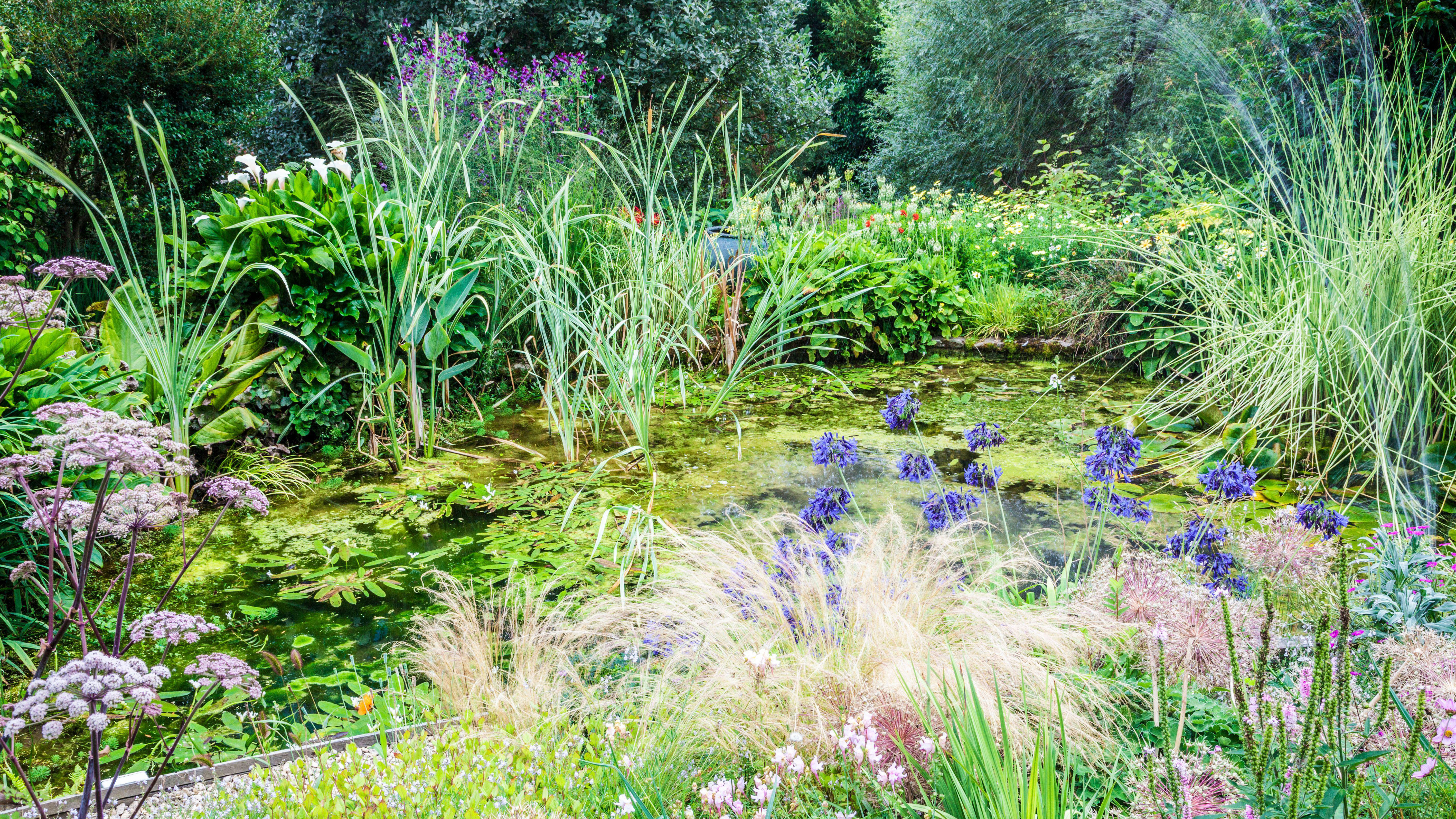

Adding pond plants to a pond or water feature in your garden, will help to keep your pond healthy and algae free, as well as looking beautiful and encouraging visiting wildlife.
Bringing in water to an outdoor space is a powerful way to make a statement and add a cooling and relaxing element. We have long known about the calming effects of water and adding it in our backyard can entirely change the atmosphere of the space.
Garden pond ideas and water features are also great for welcoming in wildlife. They are part of a garden ecosystem which will help to create balance. Moreover, the addition of species like frogs, newts and dragonflies as wildlife garden ideas adds life and movement to the garden, and a splash of color.
There are many benefits to adding pond plants. They not only create a stunning feature but also help maintain the water quality, keeping it well aerated, clean and clear. By creating the right balance of pond plants, your pond will need less maintenance for a sustainable garden.
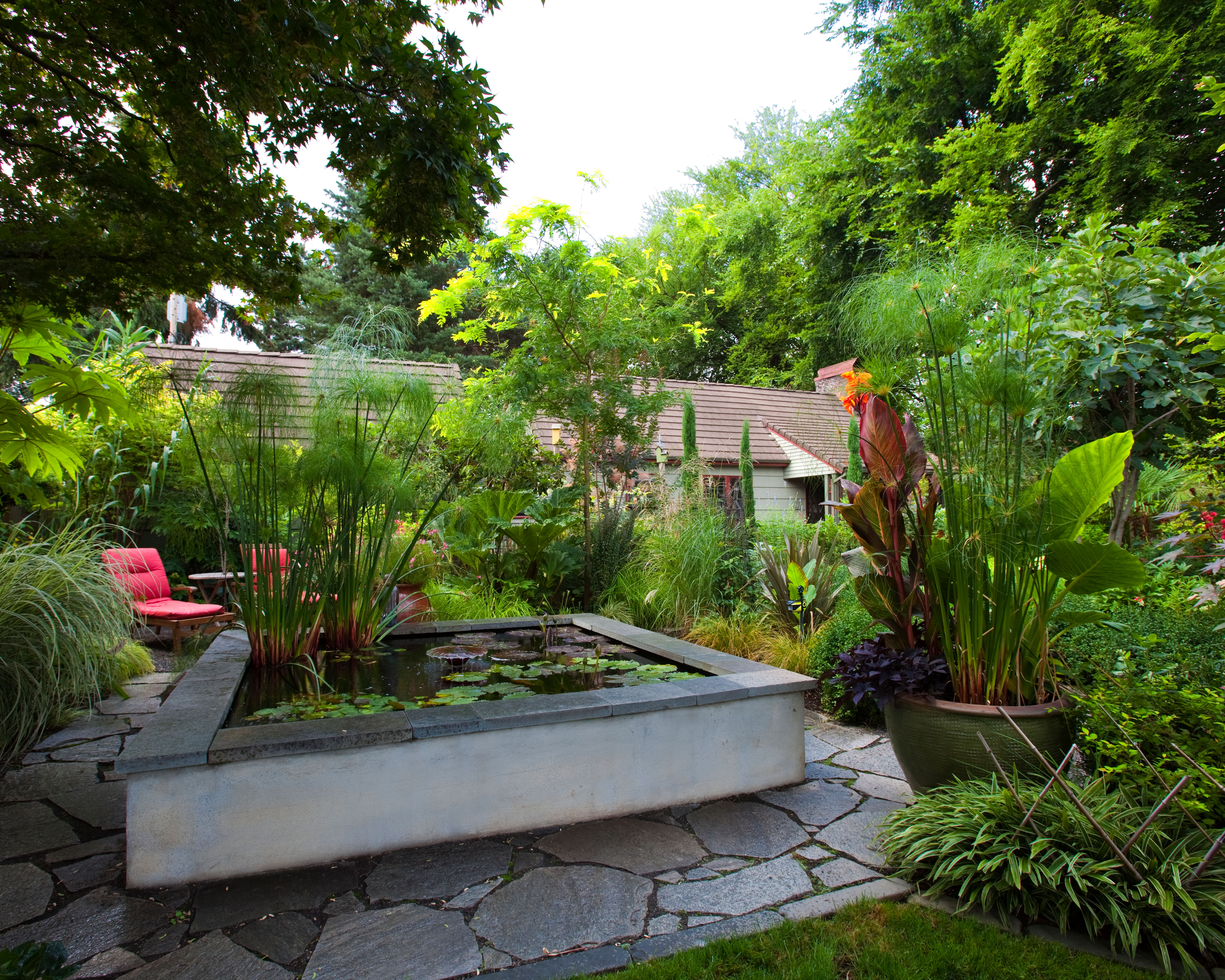
Pond plants – what to consider
There are several different types of pond plants that can be categorised as follows:
- Bog plants are adapted to life in damp, boggy soil. They are great for wet areas of the garden, and water gardens.
- Marginal plants grow well on the edge of ponds, up to around 15cm deep. They can be tall plants, that can go behind a pond to create a display, or shorter plants that help to create a natural looking border
- Deep marginal plants go in the deeper water, around the edge of a pond. They can be planted up to 40cm deep and will grow to the surface of the water.
- Deep water plants and submergents are the plants that are most important for oxygenation and maintaining healthy water in your pond and reducing the growth of algae. They can either be planted, submerged or floating and will occupy water that is more than 40cm deep.
- Floating plants as the name suggests, float on the water's surface, but some of these plants can cause problems in ponds by blocking out light to other plants and therefore decreasing oxygen levels. There are those that are very beneficial, and they will create spaces for wildlife and fish and help keep the water temperature more stable in smaller ponds.
There is plenty of choice when it comes to pond plants, and always try to find plants that suit the environment – the size of your pond, the position it is in, whether shade or sun, and the depth of the area that you want to plant.
If you are looking into how to build a pond, then plan the planting at the same time.
1. Water mint

‘My favourite plant is water mint’ says Peter Birchall, wildlife pond designer and expert. ‘It has so many wild uses, it helps to clean the water, brings in fly and bee species, and has a wonderful scent. It can also be used as an aromatic herb for cooking or mint tea,’ he continues.
Birchall recommends planting this plant for pollinators on the edge of the pond on a wet bank, or just inside the pond in shallow water. ‘It will grow in deeper water, too’ he says. ‘It loves boggy soil and a bit of horse manure and prefers a shadier spot’.
As with growing mint species of other types, it can spread fast and needs to be kept in check with regular cutting back. It is a good choice for a larger pond with more space to let it sprawl and ramble.
USDA hardiness zones 8 – 11
2. Water forget-me-not
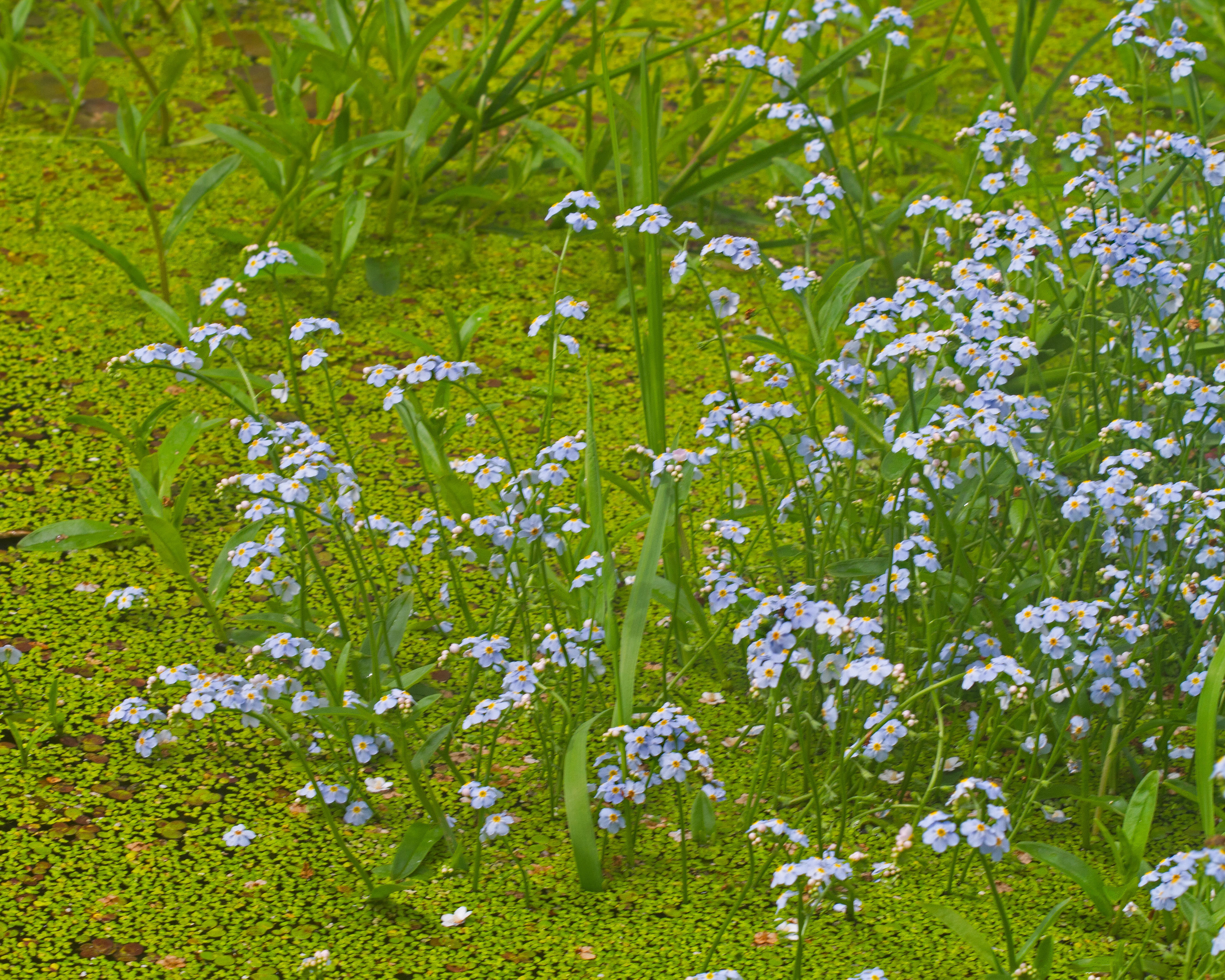
Notable for its pretty and dainty blue flowers through summer, water forget-me-not is similar to its terrestrial cousin. It is a bog or marginal plant, that will enjoy a position in damp soil near to a pond or submerged in shallow water at the edge of a pond. Its low-growing habit makes it great for naturalizing edges and creating interest.
Easy to grow, it will prefer full sun, if possible, but will also grow in partial shade, so is good as a shade plant. It can be planted in a basket in deep marginal water and weighed down, or directly into substrate at the bottom of the pond. It is perennial and will self-seed if allowed. It can be grown from seed, or by dividing an existing plant in early spring.
Zones 5 – 9
3. Fanwort
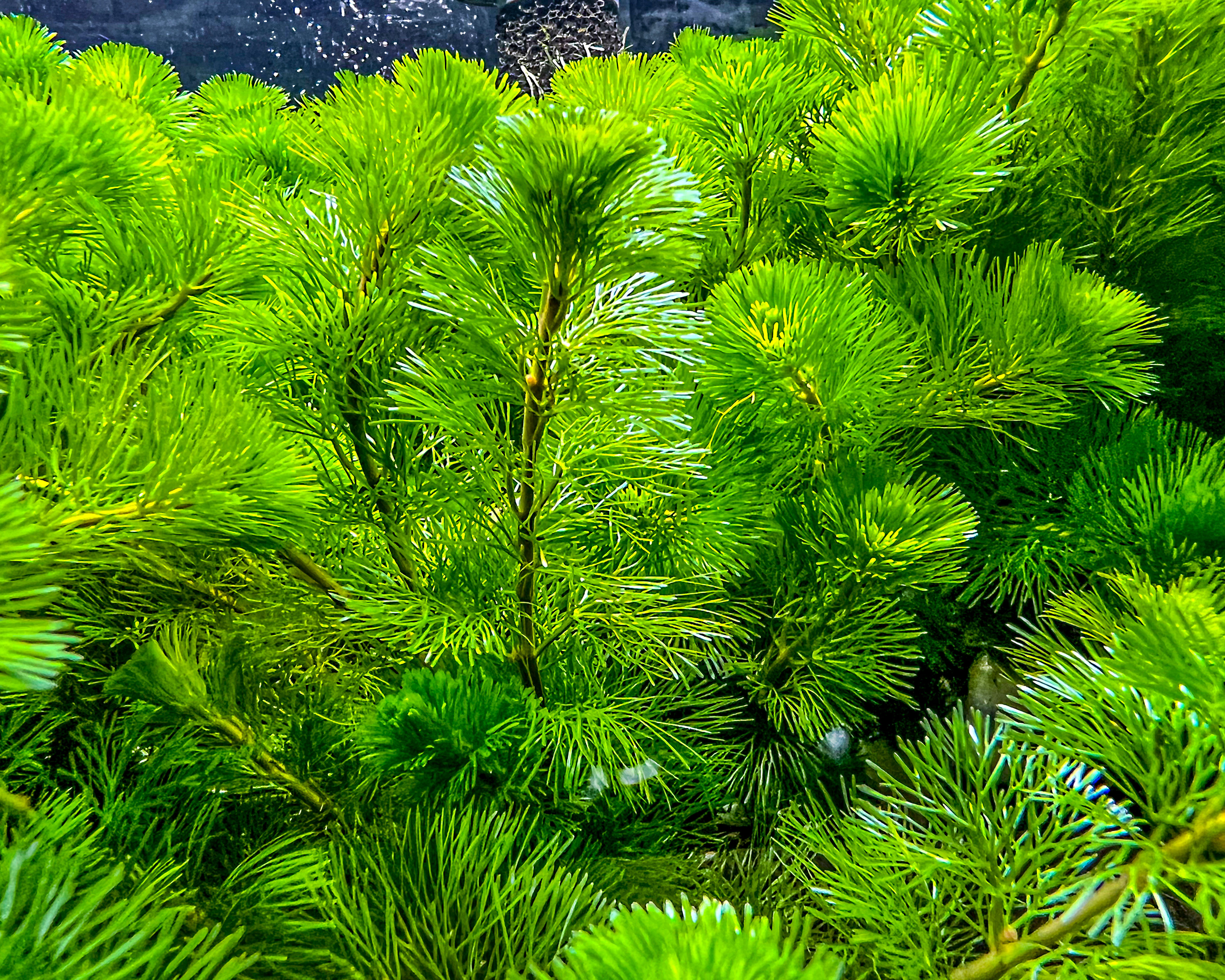
Also known as Ridged Hornwort, Fanwort is a top oxygenating weed, according to Peter Birchall. ‘It supports a lot of wildlife, is edible and highly oxygenating,’ he says.
This pond plant grows about 4 foot a year, self-seeds and can die back to nothing in cold winters.
‘It will start regrowing as the water warms up the following year, from fallen seeds. It doesn’t do any harm as it is a rootless plant and will grow profusely. If you have too much you can pull it out easily. Best of all, you can eat it as well – it’s like spinach, and very tasty,’ Peter adds.
Zones 6 – 10
4. Waterweed – Elodea
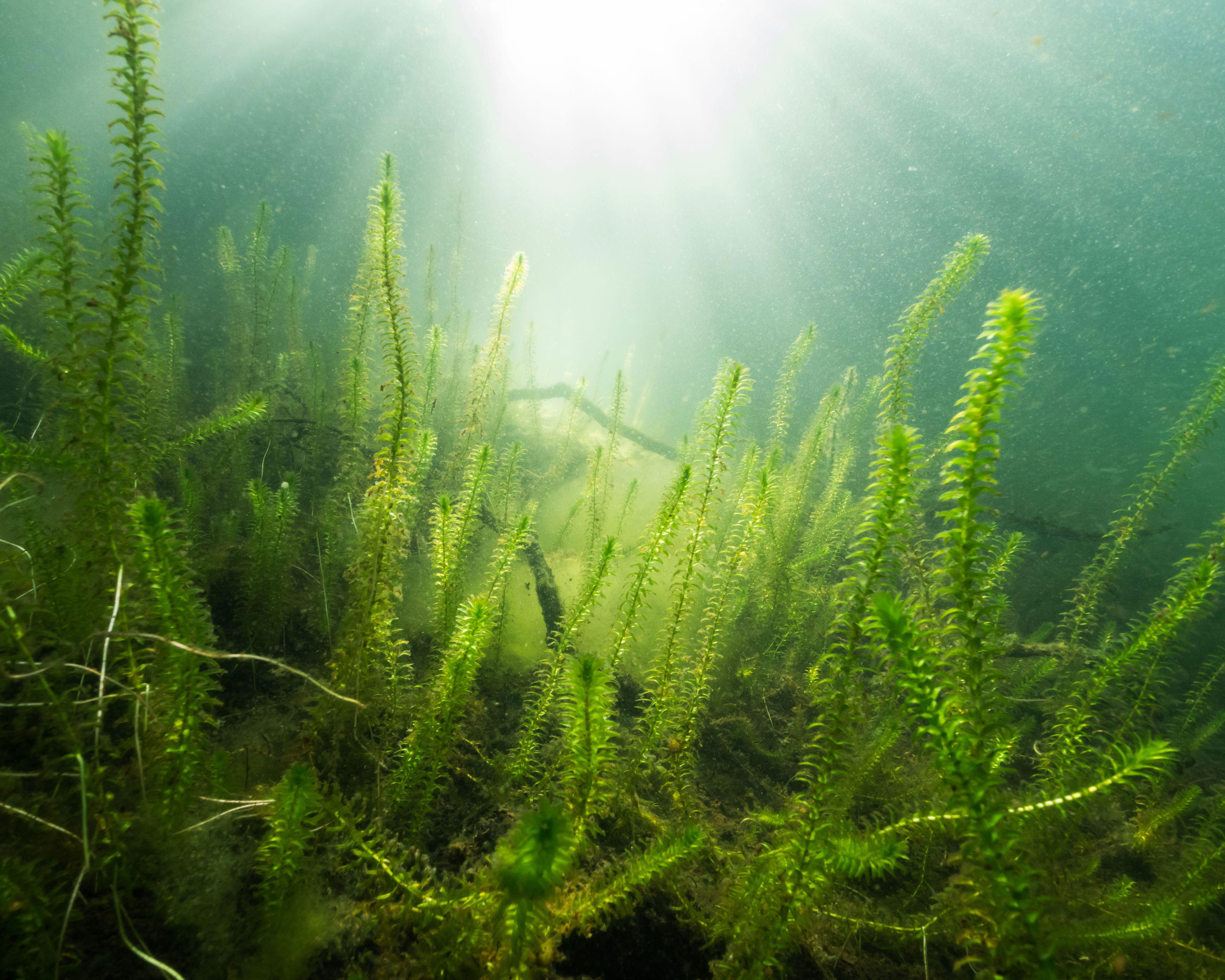
This common pond and aquarium plant is native to the US and is invasive in the UK.
Waterweed spends its life submerged beneath the surface of the pond. It is therefore very good at filtering nutrients from pond water and helping to maintain clear water and reduce algal blooms. It is also a good oxygenating plant.
It’s long, frondy leaves are happy to grow in running water if you want to add a sensory garden idea, as well as still water. It’s very easy to grow in deep water and should be anchored to the bottom of the pond, directly into the substrate, or in a submerged basket.
Zones 1 – 12
5. Brooklime – Veronica becabunda
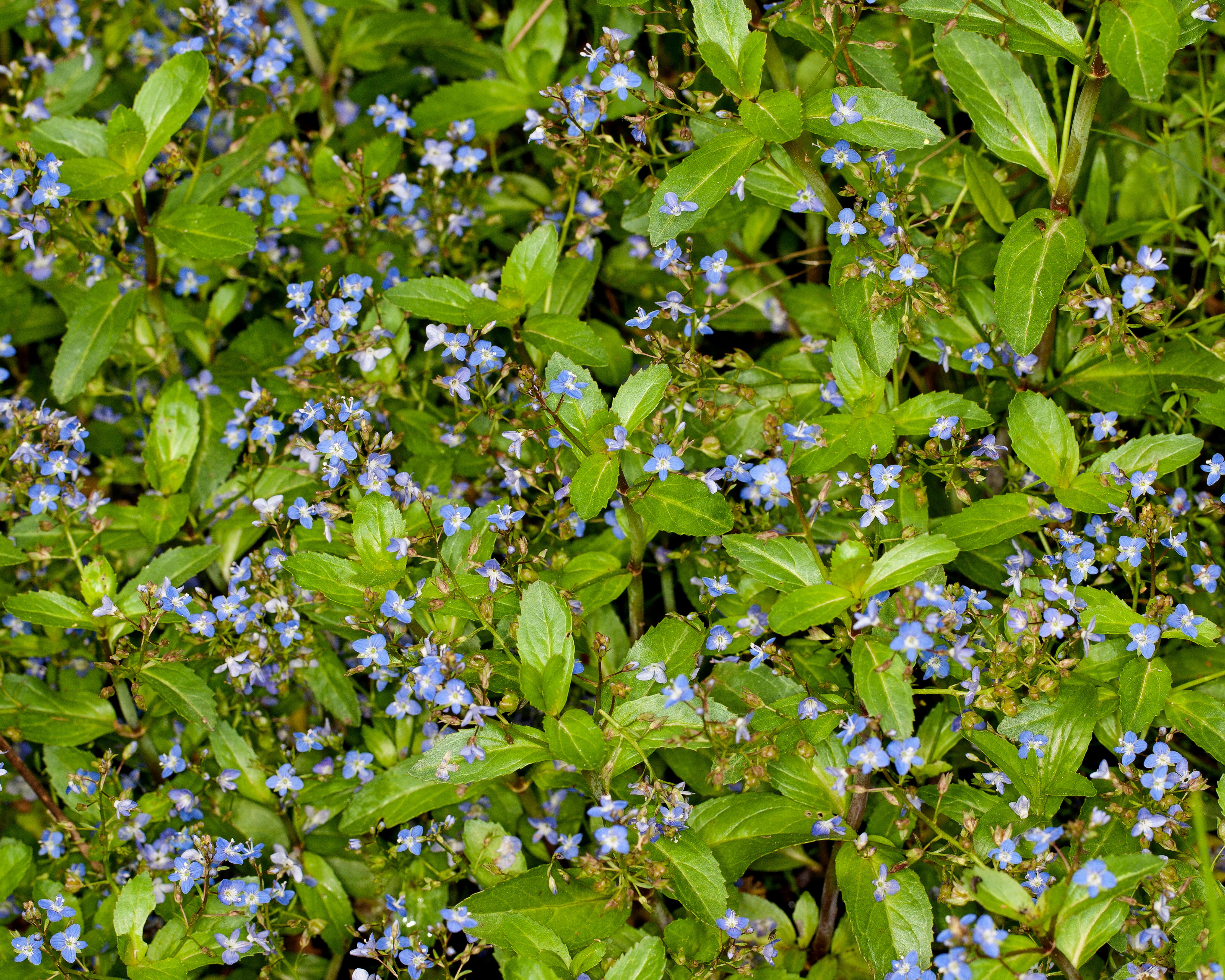
Veronica becabunda 'is quite low growing and likes boggy shade but will also grow in open sunlight,' says Peter Birchall.
This pond plant is a great choice for wildlife, and to add a bit of color into the garden if you're looking at garden color schemes for this area of the yard. ‘It has beautiful blue flowers; they’re dainty and absolutely lovely,’ Peter says, adding how the plant is great for newts who like to lay their eggs on the leaves.
Brooklime creates rafts that will sprawl out over the surface of the water. They prefer full sun but will also grow in partial shade. Brooklime is a bog or marginal plant and cannot be planted into deeper water but may spread out over the deep water.
Zones 4 – 8
6. Flag Iris

Flag Iris are beautiful, tall plants that can help add a wow factor to your pond as pond plants. In the UK the native species is Yellow Flag Iris, while in the US, the native one is Blue Flag Iris. Always choose native plants where possible as part of your permaculture gardening practices as these are more likely to grow in your climate, and less likely to become a problem over time.
‘Irises are amazing plants,’ says Catherine Moravec from Colorado Yard Care. ‘They are extremely adaptable; they resist all sorts of weird weather events and they come back year after year. Not to mention they have beautiful flowers in a variety of colors,’ she continues.
Irises are grown from a horizontal stem called a rhizome. When learning how to grow irises, 'it’s critical that you plant the rhizome at the right depth,’ says Moravec. ‘If your rhizomes are too deep then the irises will produce a lot of leaves, but they won’t produce any flowers. Also, if you plant your rhizome too high, it’s going to be too exposed to the elements and the irises won’t thrive.’
Flag Iris is semi-aquatic and will grow in boggy soil around the pond. It will tolerate being submerged for a time but shouldn’t be planted in areas that are usually under water. It grows 2 to 3 foot tall with large flowers on the tips of the stalks and decorative flat leaves. Learn how to split irises to keep them blooming.
Flag Iris provide great cover and shelter for visiting wildlife, but they can obscure your view of the pond, so ensure to plant them somewhere they won’t be getting in the way. They prefer full sun but will tolerate some shade.
Zones 3 – 9
7. Frogbit – Hydrocharis
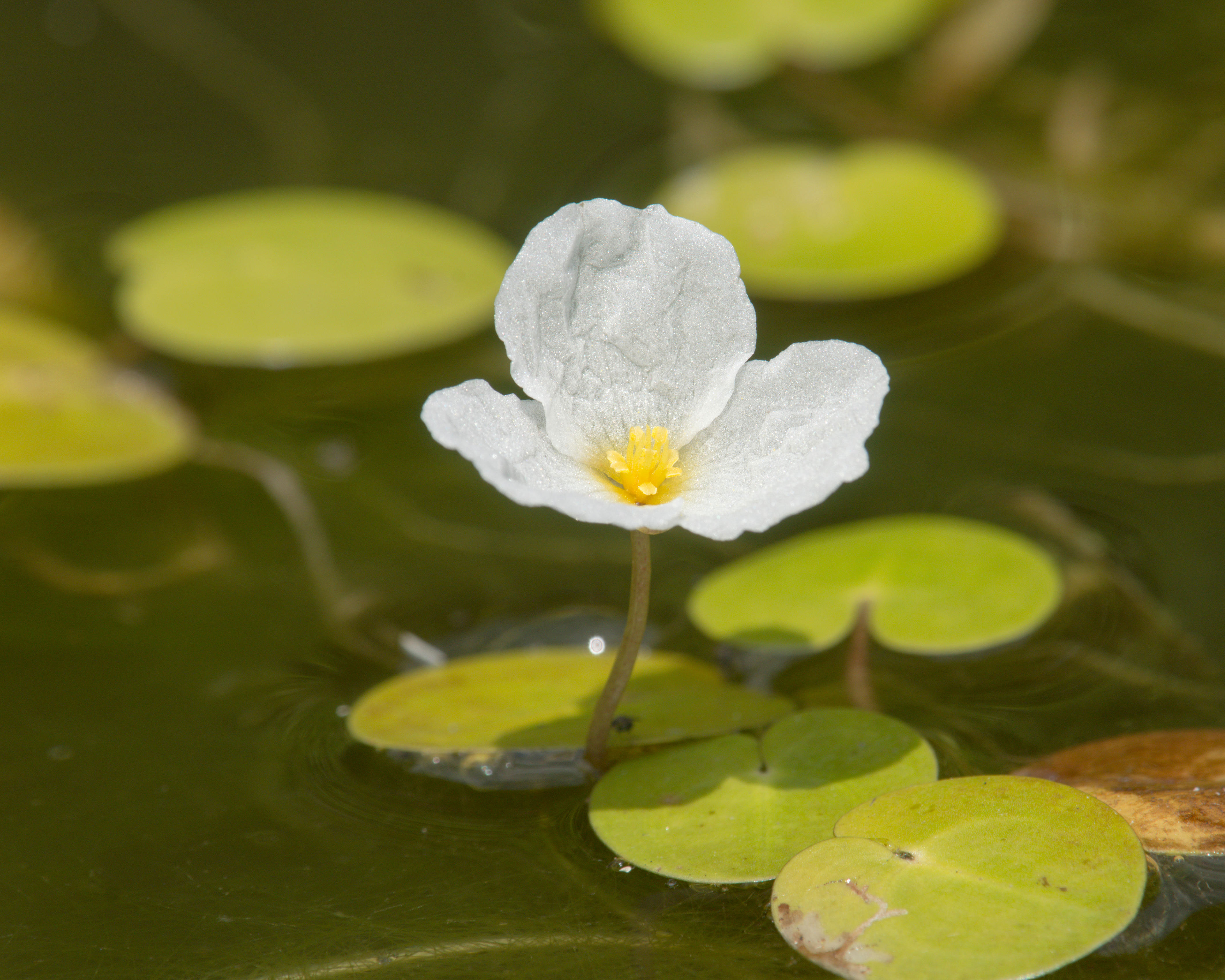
With frogbit species that are native to the US and the UK, this sweet and attractive floating plant looks a little like a tiny waterlily. It is ideal for smaller ponds created as small garden ideas. Its attractive white flowers have three petals and an open centre that is great for pollinators.
Frogbit is also easy to grow. It prefers still water, just like waterlilies. Its small lily-pad like leaves grow out in a rosette from the center and can form attractive rafts that are great for providing shade in the water and hosting plenty of aquatic life.
These pond plants will work as a deep water plant, free floating, or as a marginal plant with roots into the substrate of the pond. If they are allowed to root they will be slightly healthier and grow bigger. Frogbit is happy with full sun or partial shade.
Zones 5a – 9b
8. Water lily
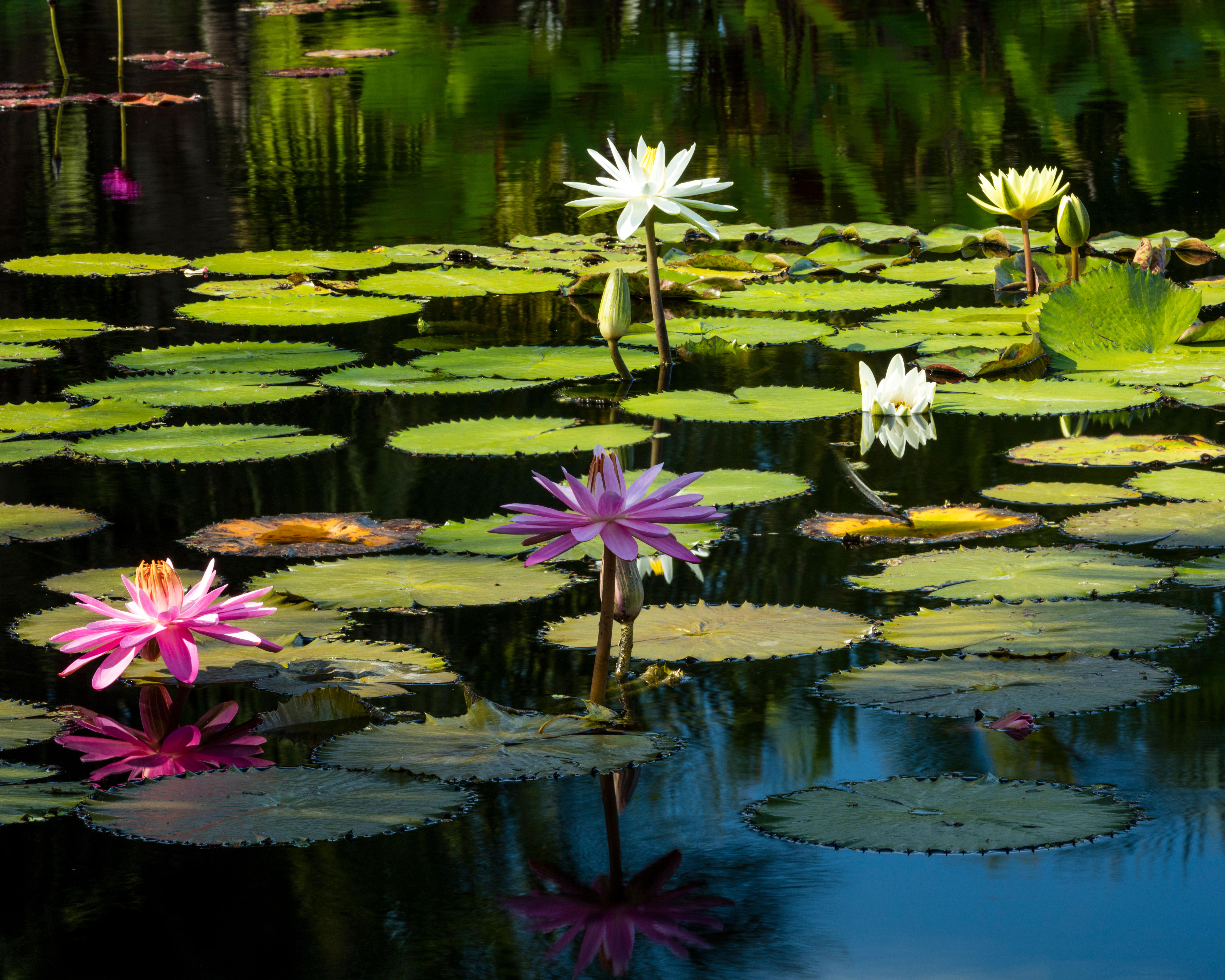
Classic and iconic, no pond should be without water lilies. They are available in a range of colors including white, pink and yellow and also come in a various sizes that will suit any sized pond.
Waterlilies have beautiful flat, round leaves and large showy flowers that sit on the surface of the water.
They are suited to deeper water and can be planted directly into a pond or into a weighted basket. They will spread more readily if planted directly. They like heavy clay with plenty of organic matter, and they also like flat, calm water, away from any disturbance, such as garden fountains.
Zones 3 –11
9. Creeping Jenny
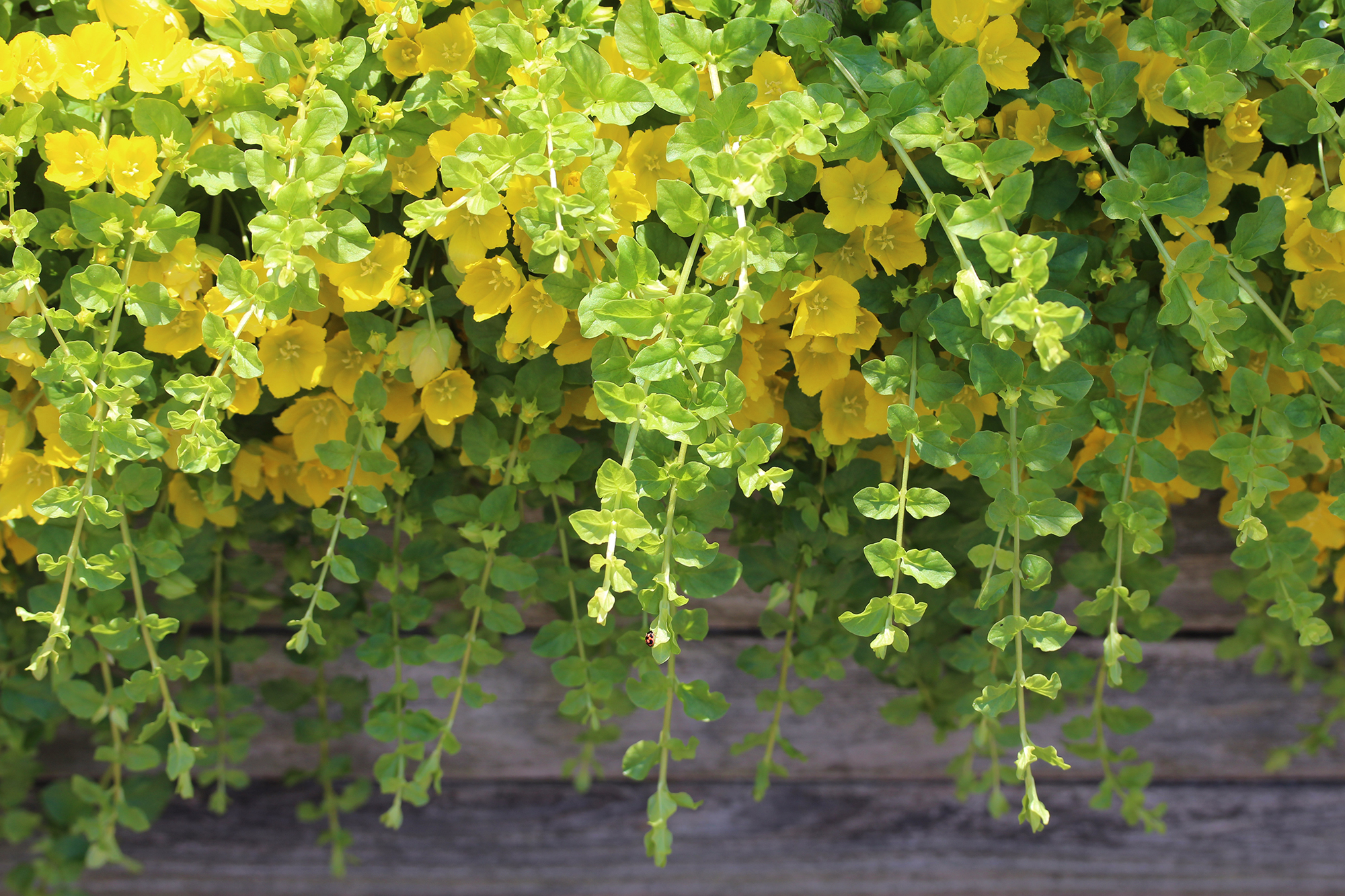
A beautiful, edible and versatile vining plant, creeping jenny is a great choice for naturalizing the edge of a pond.
It will grow in relatively dry soil type for an aquatic plant, so is a good choice if the edge of your pond is prone to being dry. It will often grow towards the water and stretch out over it forming a raft. In the summer it is also covered in bright gold flowers. It is primarily a bog plant, but will also grow in shallow marginal water.
Creeping jenny is easy to propagate and will set roots from its stem, so you can simply remove a section with some leaves and a root attached and plant it near your pond. It’s very low growing, but will trail so looks great alongside a feature such as a waterfall or ledge.
Zones 3 – 9
10. Hornwort
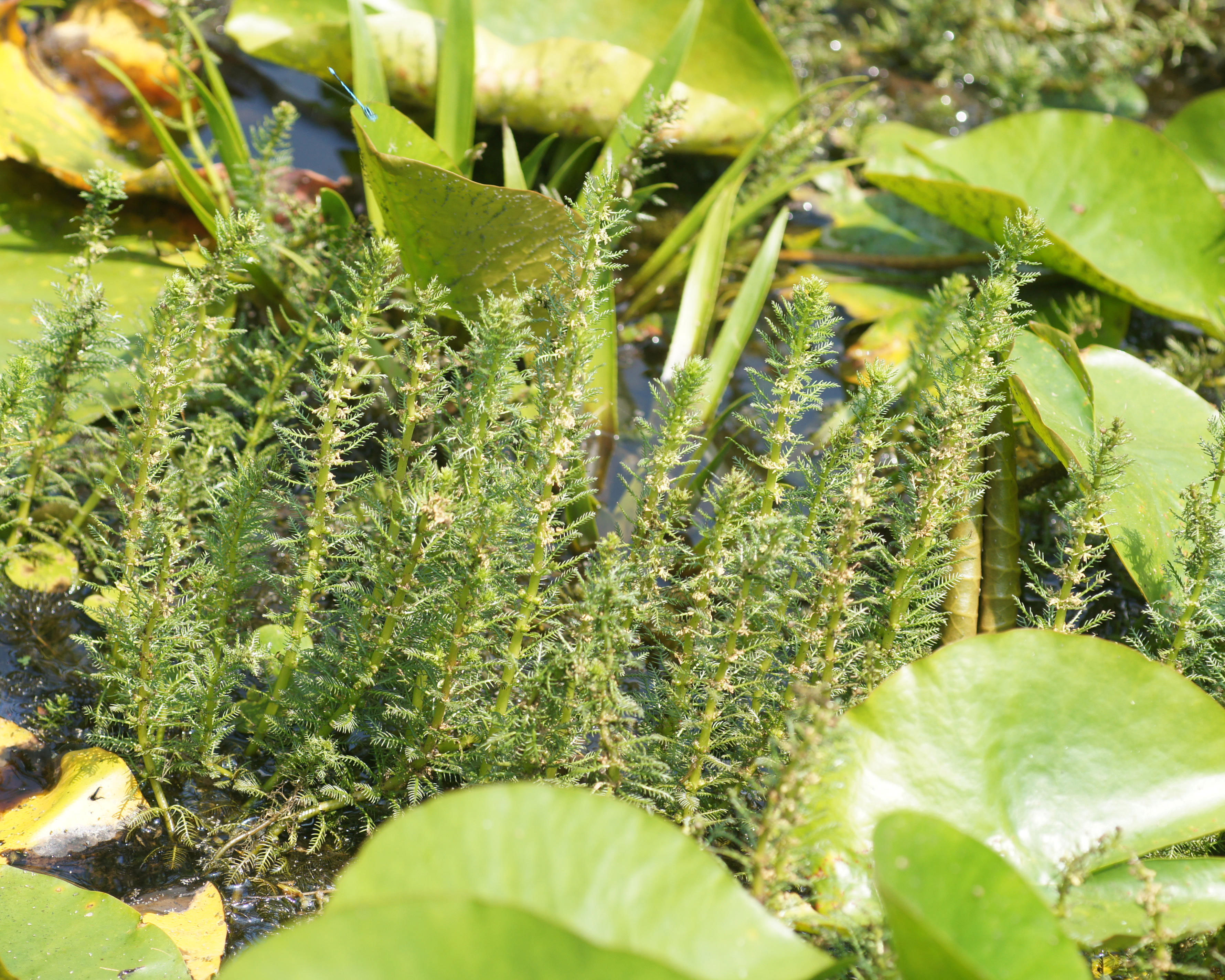
An easy to grow plant, hornwort is a brilliant aerator among the pond plants of choice. It will provide refuge for aquatic wildlife while also maintaining the water quality in your pond.
Hornwort is a deep water, perennial aquatic herb. It prefers full sun or partial shade and will remain submerged. It can be planted up to 9ft deep ,so is great for larger and deeper ponds.
Hornwort should be placed in a bucket of room temperature water for a few days, somewhere shady to help it recover from the stress of transport. Ensure that it is submerged by weighing it down. Once it recovers its bright green color, it is ready to be planted into the pond. It can be placed into a basket and weighed down or planted directly into the substrate at the bottom of the pond.
Zones 3 – 11
Can I use normal soil for pond plants?
‘When making a wildlife pond, we cover the liner with around 6-8 inches of low-nutrient clay soil,’ says Peter Birchall. This will also make it easier for plants to grow in your pond, providing them with a more natural environment for their roots to grow.
Ensure tall plants are planted at the back of a pond, and shorter plants at the front so that your pond isn’t being obscured from view.
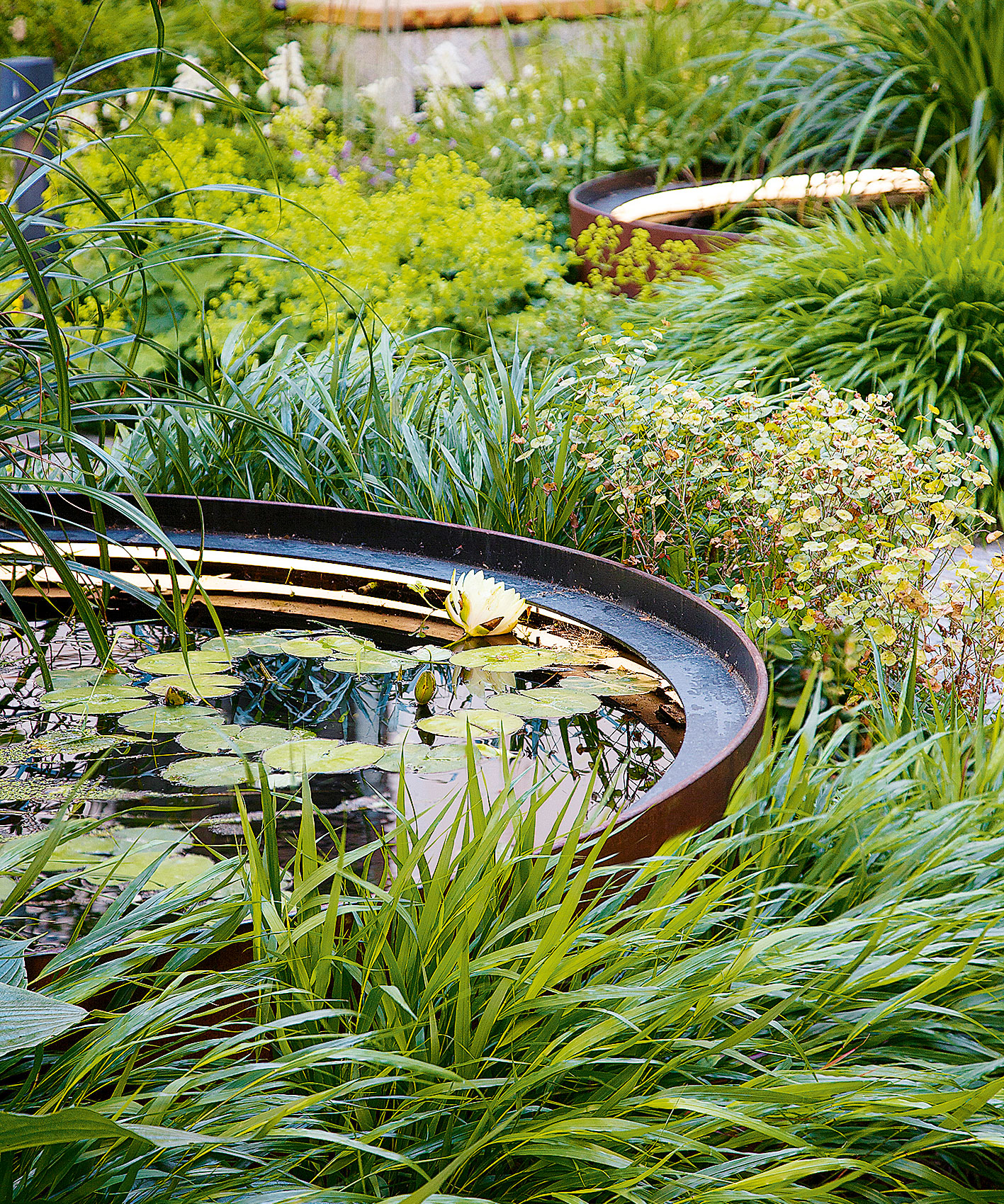
Do pond plants keep the water clean?
The pond plants that keep water clean and clear are the aerating plants, such as Fanwort and Hornwort. This is because they take in nutrients from the water through their roots and through their foliage. Excess nutrients in water leads to algae.
Plants that are fast growing will generally out-compete algae, taking the nutrients for themselves. But these plants, such as water lettuce and water hyacinth, should be controlled by removing a portion of them regularly to stop the surface being fully covered.
If you do have an algal bloom, this is a normal part of pond ownership. You should try to remove the algae carefully and place it on the edge of the pond so that anything living inside it can crawl back into the pond.
Ensure that you are not using nitrogen or ammonia-based fertilisers anywhere near a pond. These are the most likely to cause damaging levels of nutrients that will cause your pond to get clogged with algae.
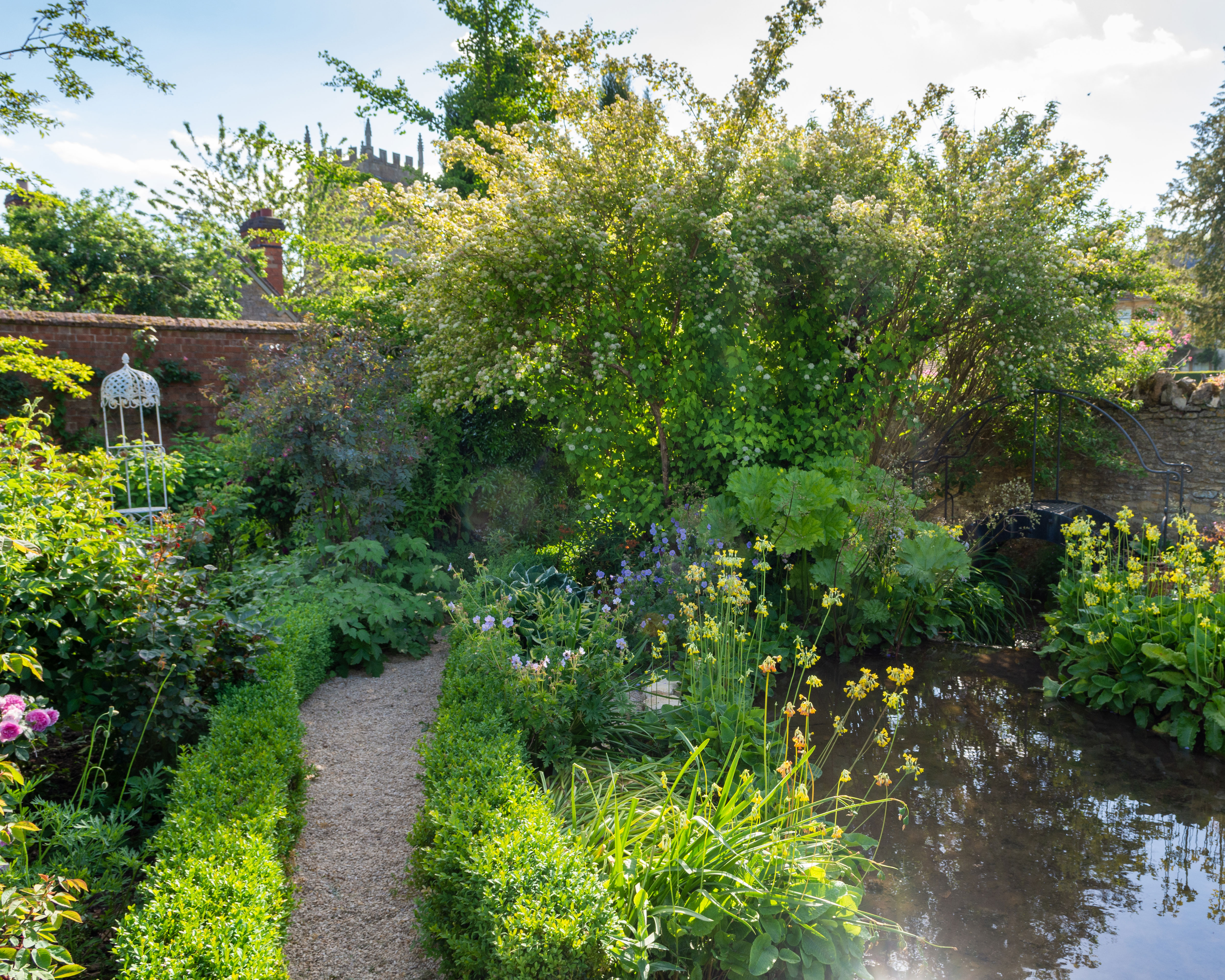
What is the best oxygenating plant?
The best oxygenating plants are those that are submerged beneath the surface of the water. Oxygen will escape through pores on the leaves as a natural part of photosynthesis, adding oxygen into a pond.
This is great for the health of a pond and will allow other plants and wildlife to thrive. It will also help to keep the water clear. Fanwort and Hornwort are two of the best oxygenating plants, along with water wisteria and eel grass.
Which plants are best for a small pond?
Many pond plants are suited to a small pond as they are very low growing and will inhabit the surface of the water. They are often happy with full sun or partial shade. This is useful because the shade conditions at these low levels can change a lot throughout the year as taller plants grow up around the pond.
It’s a good idea to create shady spots around a pond with some plants as this will encourage wildlife. A small tree such as an acer or a willow will look great and make your pond more wildlife friendly!
Sign up to the Homes & Gardens newsletter
Design expertise in your inbox – from inspiring decorating ideas and beautiful celebrity homes to practical gardening advice and shopping round-ups.

Becky is a freelance writer, blogger, and podcaster. Her blog, Sow Much More and her podcast The Seed Pod are aimed at making organic gardening more accessible and encourage others to grow their own food.
-
 Barack and Michelle Obama's neutral accent chair is the perfect living room focal point – you can recreate their serene style in any-sized home
Barack and Michelle Obama's neutral accent chair is the perfect living room focal point – you can recreate their serene style in any-sized homeThis designer-approved essential fits into every modern living room – it's beautiful enough to stand alone, while pairing well with your favorite cushion
By Megan Slack Published
-
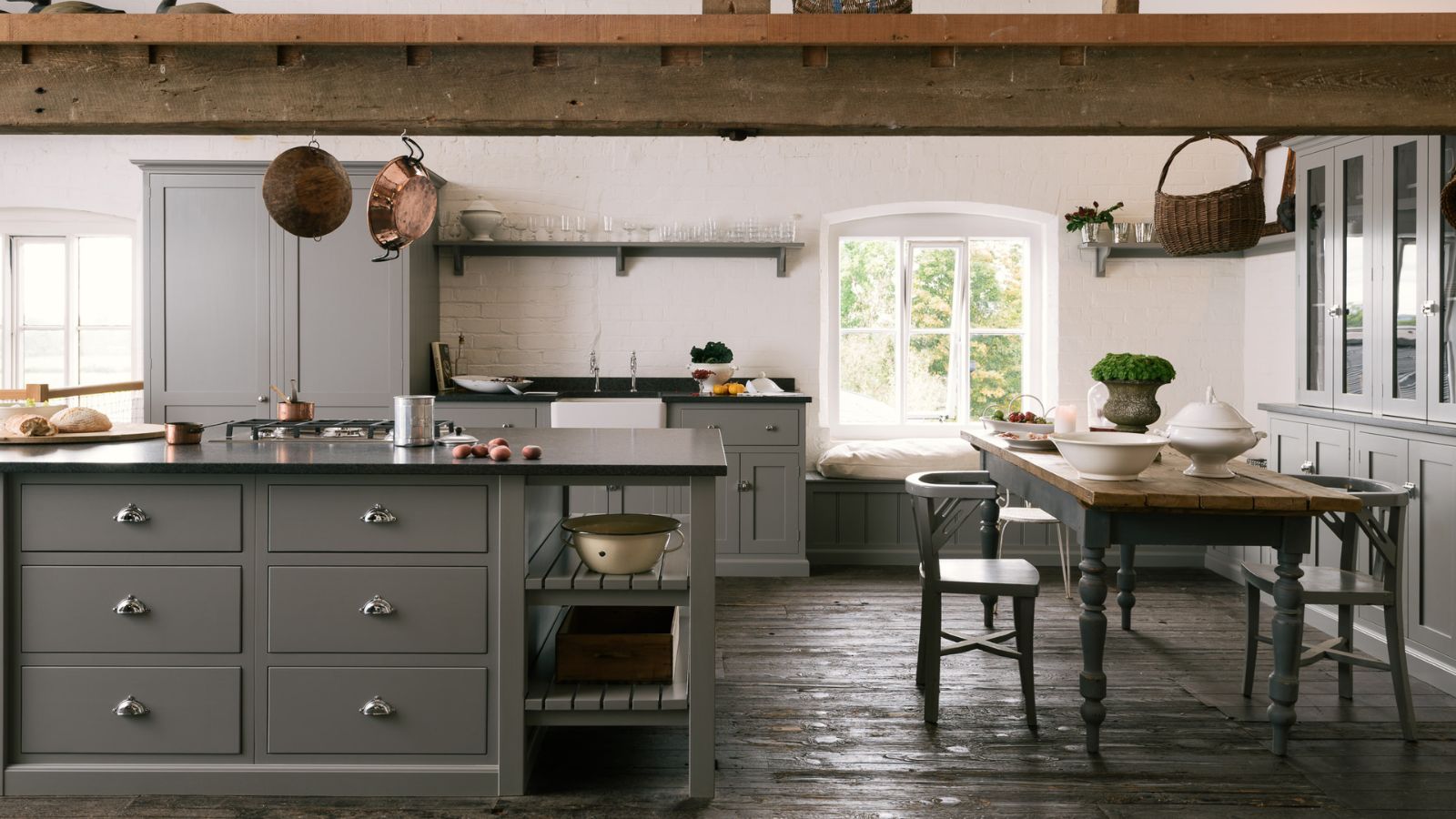 Should I choose a kitchen island or a kitchen table? This is the expert advice that helped me decide
Should I choose a kitchen island or a kitchen table? This is the expert advice that helped me decideIt's all about how you use your space
By Molly Malsom Published